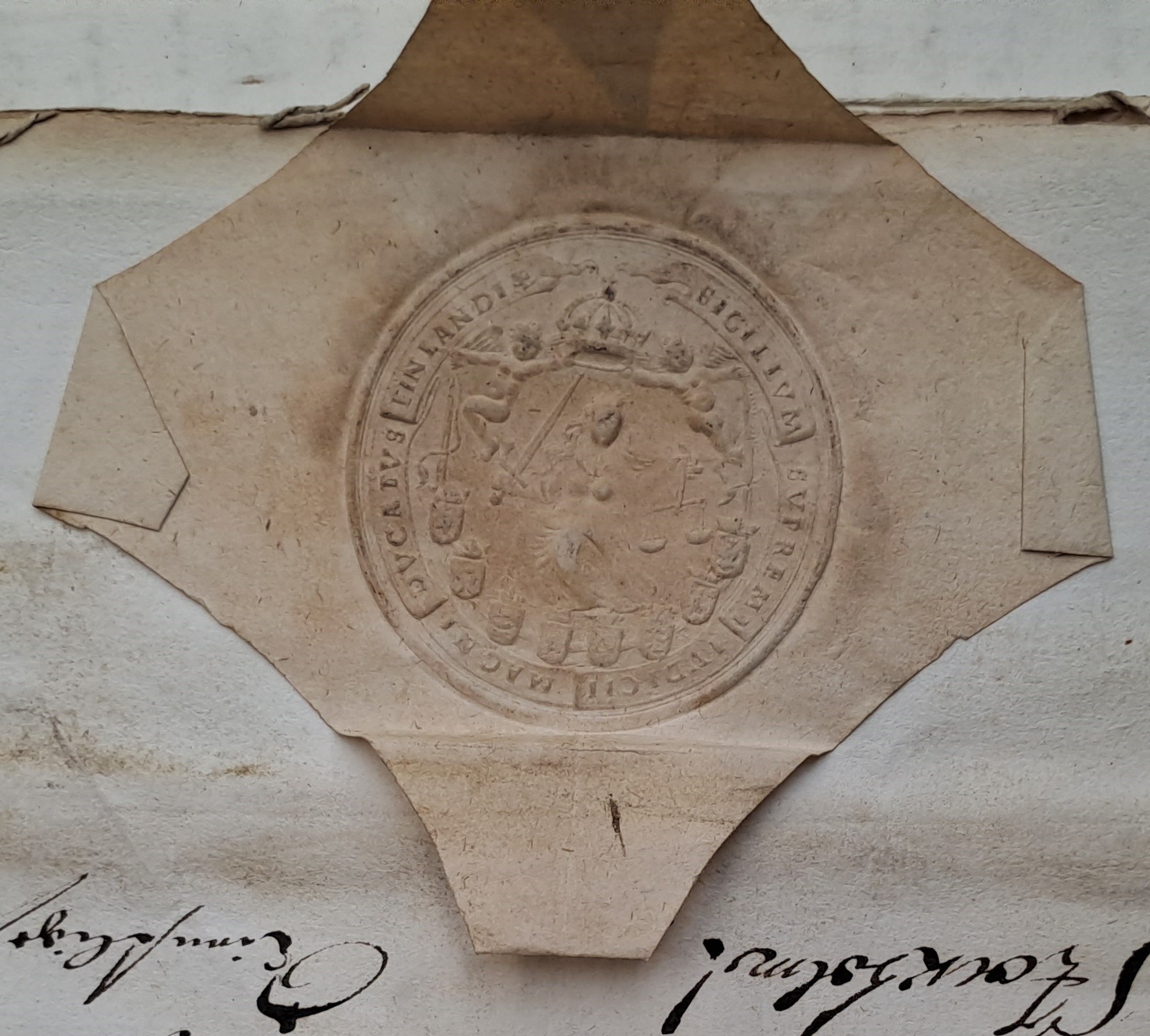The Turbulent 1600s in Turku in Terms of Legal Practice
In the 17th century, a revolution took place in the Swedish kingdom in the field of justice. At that time, courts of appeal were established, a bar association was established, the qualification requirements for judges were specified, and judgments were harmonised. In my doctoral dissertation on legal history, I examine the changes in the administration of justice in the town of Turku in the 17th century through the legal actors and the legal awareness and legal expertise of the residents.
A Significant Town of the Kingdom
Turku grew rapidly in the 17th century, and the town was the third or fourth largest in the entire Swedish Empire with its 7,000 inhabitants. The town became home to the Swedish kingdom’s second court of appeal in 1623, after the Svea Court of Appeal in Stockholm. Turku was home to a concentration of courts, as the court of appeal had jurisdiction over the whole of Finland. The townspeople made very active use of it.
The magistrate’s court and its lower court ruled on matters concerning the town’s residents, and appeals from the magistrate’s court were made to the court of appeal. The Turku Cathedral Chapter passed judgment according to ecclesiastical law, and the Turku Academy, founded in 1640, had jurisdiction over its subjects. All these courts worked together effectively, but even so, conflicts between their respective jurisdictions could not be avoided.
In addition to the courts, the Governor-General of Finland, the provincial governor, and the county governor also had influence in Turku. They received their orders directly from the monarch and the central government in Stockholm. They assisted the courts, but they also had the right to make independent decisions and recommendations in legal matters.
From the beginning of the century, the central government created new positions in Turku. The task of these new officials was to supervise economic life. At the same time, their duties included prosecuting rule breakers in court. The interests of these officials also conflicted. Positions were abolished and new ones created to replace them. All this made the situation at the beginning of the century confusing, and it only gradually became clearer and more stable.
Tens of Thousands of Court Cases
All of the above-mentioned instances formed a strict hierarchical structure, and it was not always clear who had the final say in matters. It was still possible to appeal to the Revision of Justice in Stockholm or directly to His Majesty. For my research, I am going through all the court records of the town, so I can identify even the smallest nuances in the changes in the administration of justice in 17th-century Turku.
All of the material relevant to this study consists of tens of thousands of court cases and references relating to legal actors. Material concerning the Turku Court of Appeal in the Swedish National Archives complements the picture of how the judicial system and the courts functioned. The Swedish archive material is of importance, as the archives of the Turku Court of Appeal were almost completely destroyed in the city fire of 1827.
These court records are very extensive, as evidence was a key element in Swedish legal proceedings in the 17th century. The defendant’s background was investigated over a long period of time, and the witnesses’ views on justice are clearly expressed. The defendants were also given the opportunity to express their views on the matters. This also reveals the legal skills of the townspeople.
If an individual did not have the experience or knowledge to handle their own case in court, there were people in the city who were able to advise them. For example, maids who had just moved from the countryside were advised by elderly widows, who also found them jobs in the city.
Court records show that the Turku City Council and residents did not always accept reforms without resistance. For example, a decree issued by Her Majesty Queen Kristina concerning the division of professions in the town led to repeated warnings from the courts and authorities and, after a year and a half, threats to expel the bourgeoisie who refused to comply from the city.
The Dawn of a New Judicial Era
From what I have presented above, it is clear that legal institutions were undergoing a period of intense change in the Swedish realm, especially in the early 17th century. By the end of the century, they had settled into their established roles. Each legal institution had its own place in the hierarchical environment. Those who applied the law were educated, unlike at the beginning of the century.
Why, then, is the transformation of the law and the administration of justice in the 17th century important from a research perspective? First and foremost, because it was during this period that the stable foundation was laid upon which today’s law and administration of justice are based. Until 1734, medieval provincial laws and a city law were followed. It was only in that year that a national law was passed, replacing the previous, partially outdated provincial laws. This law still forms the basis of our current law.
About the Author

Veli Pekka Toropainen is a doctoral researcher at the Faculty of Law of the University of Turku. He also holds a Doctorate in Philosophy with a focus on Finnish history. He is specialised in the history of Turku in the 17th century. In 2024, he was awarded the Knight’s Cross of the Order of the Lion of Finland for his achievements in the field of history and genealogy. Title of his thesis: Changes in the Judicial System in the Swedish Empire in the 17th Century and its Impact on the Local Community of Turku, ca. 1610 and 1710.
Picture: The Great Seal of the Court of Appeal of Turku, 1661. Veli Pekka Toropainen, 2023.







